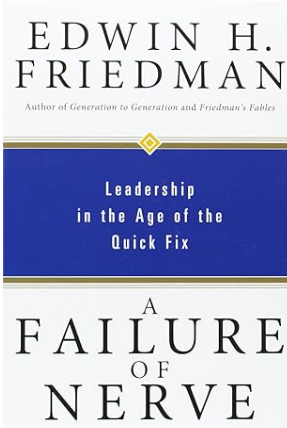Becoming a Self-Differentiated Leader
- Maria Montemayor
- Jul 23, 2024
- 2 min read
Updated: Dec 5, 2024

To become a self-differentiated leader, the focus must begin with self-awareness and self-care. According to Edwin Friedman, becoming a differentiated leader is a journey toward maturity that starts with prioritizing oneself. This involves developing a strong sense of identity and being able to take a well-defined stand on important issues while remaining connected to colleagues and those being led. An effective leader must understand their own values, direction, and identity to navigate the complexities of leadership effectively.
Navigating Emotional Processes in Leadership
Leadership is inherently an emotional process, often accompanied by obstacles rooted in habit or tradition. These obstacles are frequently perceived as normative within organizations, and any attempt to introduce change can provoke anxiety. A self-differentiated leader must be capable of setting clear goals and communicating them effectively while maintaining connections with others without compromising their identity or the ultimate objective. Recognizing and managing the emotional dynamics of leadership is crucial for fostering a resilient and adaptable organizational culture.
Managing Resistance and Anxiety
Resistance to change is a common challenge, as individuals may fear or oppose altering the status quo. A self-differentiated leader must resist succumbing to the anxiety such individuals bring and instead encourage them to take responsibility for their own emotions and responses. For example, within my organization, I encountered resistance to changes made in the Spanish program. Despite pushback from a science teacher who opposed the new DuoLingo content gamification platform, I remained focused on my objectives and continued to see positive results from students. By allowing the science teacher to manage her own anxiety and addressing the topic when appropriate, I maintained my leadership stance without being derailed by resistance.
Implementing Crucial Conversations for Effective Leadership
Crucial conversations play a significant role in the practice of self-differentiated leadership. These conversations involve open, honest, and respectful dialogue about important issues, which is essential for fostering understanding and collaboration. The methodology of crucial conversations helps in developing strategies to address conflicts, manage resistance, and ensure that all voices are heard. By implementing these techniques, a leader can create an environment where difficult topics are discussed constructively, leading to better decision-making and stronger relationships within the organization.
Conclusion
Overall, the journey to becoming a self-differentiated leader involves focusing on self-awareness, managing emotional dynamics, and effectively navigating resistance to change. By incorporating activities that cultivate a growth mindset and implementing crucial conversations, leaders can inspire their teams to embrace challenges and take ownership of their educational journey. This holistic approach ensures that students and colleagues are better prepared to achieve success in a supportive and engaging learning environment.
.
References:
Friedman, E. (2015, August 13). Friedman’s theory of differentiated leadership - made simple. Friedman’s Theory of Differentiated Leadership - Made Simple.
Friedman, E. H., Treadwell, M. M., & Beal, E. W. (2007). A failure of nerve: Leadership in the age of the quick fix. Seabury Books.







_edited_edited.jpg)




Comments